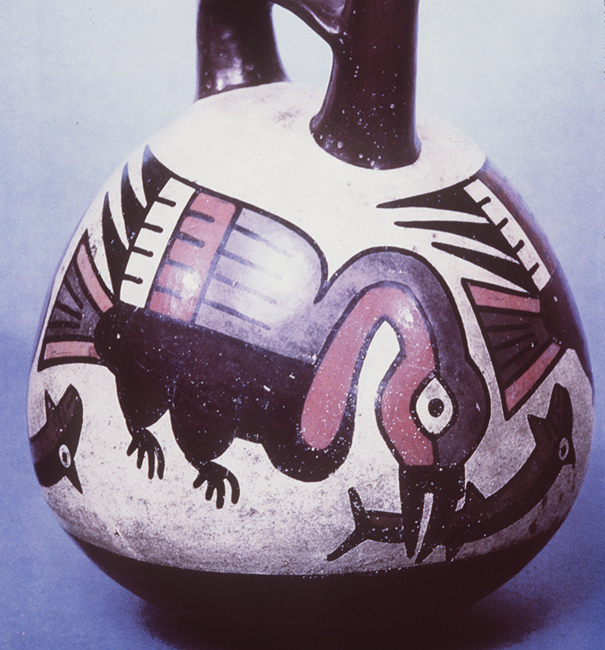Source: WTL course archives.
Humanities field: (practical) art object: Terra-cotta stirrup-spout vessel about 6 inches high from the Museo de América in Madrid, Spain.
Humanities Comments: This small piece is from the mysterious Nazca culture (200 BCE - 800 CE). On the vase we see a sea bird with a fish in its beak. This civilization thrived in the dry climate of the coastal area in what is now southern Peru. This people constructed underground aqueducts and the hundreds of inexplicable patterns (called geoglyphs) in the desert, which make sense only when viewed from the sky. Figures photographed from airplanes include fish, hummingbirds, lizards, llamas, monkeys, and spiders. Nazca art is also known for its use of color, ceramics, textiles, stylized figures, geometric designs, symbolic abstraction, and figurative representations of animas and plants, as can be seen in the example above.
Humanities Questions: (A) How "modern" does this vase seem to you? (B) Compare and contrast this terra-cotta art object with any other pre-Columbian art object in this online textbook.


